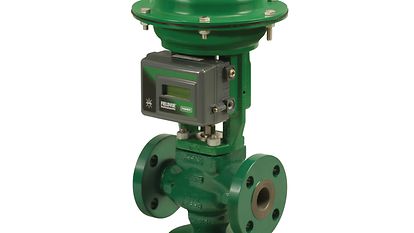
Maximize Power Financial Savings and Convenience With Advanced Structure Automation Controls
In the realm of modern style and center monitoring, the combination of sophisticated structure automation regulates stands as an essential development. The merging of innovation and sustainability has birthed a brand-new era where energy performance, comfort optimization, and operational streamlining are no more far-off aspirations however possible realities. By harnessing the power of automation, structures can adapt, respond, and evolve in ways that were as soon as unimaginable. The capacity for considerable energy financial savings and improved convenience is not simply a possibility yet a guarantee waiting to be satisfied. This standard change in structure management holds the essential to unlocking a globe where environmental conscientiousness and passenger well-being sympathetically exist together within the walls of our structures.
Power Performance Advantages
Power performance benefits can substantially minimize energy consumption and functional costs in buildings. Energy-efficient systems, such as innovative structure automation controls, can enhance the use of sources like heating, cooling, and illumination, leading to reduced energy costs over time.
In addition, improved energy performance can prolong the life expectancy of building equipment and systems. By operating much more successfully, a/c systems, lighting fixture, and various other structure parts experience less wear and tear, causing reduced upkeep and substitute costs. Furthermore, energy-efficient buildings usually regulate greater home values and rental rates, giving lasting economic benefits to owners.
Moreover, energy performance can boost occupant convenience and performance. Properly controlled interior environments with ideal lighting and thermal problems develop a more favorable and pleasant workspace, resulting in enhanced employee fulfillment and efficiency. Generally, the energy effectiveness benefits connected with innovative structure automation controls are multifaceted, encompassing price financial savings, ecological stewardship, and passenger well-being.
Enhanced Comfort Control
Enhancing comfort control in building settings needs an advanced combination of sophisticated automation systems for optimal owner health. By making use of advanced structure automation controls, facilities can tailor the indoor environment to meet the details demands and choices of residents. control valves.
By incorporating these advanced controls, buildings can not only boost comfort but also improve energy efficiency by enhancing system procedures based on actual occupancy and usage patterns. Ultimately, focusing on resident comfort with innovative automation systems leads to an extra enjoyable and healthier interior environment.
Operational Efficiency Improvements

Additionally, the execution of real-time surveillance and analytics devices allows building drivers to determine energy ineffectiveness and functional abnormalities quickly. By continuously keeping track of power usage patterns and system efficiency metrics, changes can be made in real-time to maximize energy usage and make sure peak functional effectiveness. control valves. In addition, incorporating need response strategies into building automation controls can better improve operational effectiveness by dynamically readjusting energy usage based upon grid conditions and prices signals
Indoor Climate Optimization
Efficient indoor climate optimization is important source a basic facet of building automation controls, making sure passengers' comfort and health while taking full advantage of power cost savings. By utilizing advanced sensors and controls, developing automation systems can constantly readjust and keep an eye on temperature level, humidity levels, air quality, and air flow to develop an optimal interior environment. Preserving consistent and comfortable conditions not only boosts passenger satisfaction yet additionally enhances productivity and overall health.
Indoor climate optimization also plays a crucial function in energy efficiency. By article fine-tuning air conditioning, home heating, and air flow systems based on real-time data and tenancy patterns, developing automation controls can significantly lower power usage - control valves. For example, carrying out techniques such as demand-controlled ventilation and thermal zoning can aid decrease energy waste while making sure that each area of the building obtains the essential conditioning.

Lasting Setting Creation
Structure automation regulates not just maximize interior climate conditions for power efficiency and passenger convenience yet also lay the foundation for creating a sustainable setting via strategic administration of sources and systems. By incorporating innovative structure automation technologies, such as sensors, actuators, and intelligent software application, facilities can change and keep an eye on energy usage in real-time to minimize waste and decrease their carbon footprint. These systems make it possible for anticipating maintenance, recognizing potential concerns before they intensify and enhancing equipment efficiency to boost longevity and performance.
Additionally, lasting atmosphere creation expands beyond power management to include water conservation, waste reduction, and indoor air high quality improvement. Structure automation controls can control water use, find leakages, and ensure correct garbage disposal techniques, adding to overall sustainability efforts. Additionally, by discover here keeping an eye on and controlling air flow and filtering systems, these modern technologies improve resident health and wellness and efficiency while reducing energy intake connected with a/c operations.
Conclusion
To conclude, advanced structure automation regulates offer substantial benefits in terms of power cost savings, convenience control, operational performance, indoor climate optimization, and creating a lasting atmosphere. By executing these controls, structures can attain optimal efficiency while decreasing energy usage and enhancing passenger convenience. It appears that the usage of innovative automation technology is vital in boosting building performance and producing an extra sustainable future.
Energy performance benefits can substantially lower power usage and functional expenses in buildings. Generally, the power performance benefits connected with advanced building automation controls are diverse, incorporating price financial savings, ecological stewardship, and occupant well-being.
Furthermore, including need feedback techniques into building automation controls can even more improve functional effectiveness by dynamically readjusting power use based on grid conditions and prices signals.
Building automation manages not only enhance interior environment problems for energy effectiveness and passenger comfort however additionally lay the foundation for developing a lasting setting through critical administration of resources and systems.In conclusion, progressed structure automation controls deal significant benefits in terms of power financial savings, comfort control, functional efficiency, indoor environment optimization, and producing a lasting atmosphere.
Comments on “Enhancing Operational Efficiency with Advanced Control Valves”